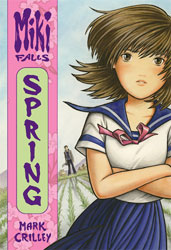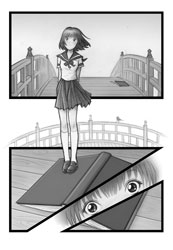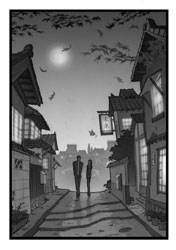The digital manga portal JManga got off to a slow start, but it has gained traction among manga fans for a number of reasons: Cool, quirky manga, reasonable prices (once the site owners abandoned the original price of $8.99 per volume), and good communication with fans.
We can thank Robert Newman for the latter; from the very beginning, he was out there as the public face of JManga, listening and responding to every review and snarky Tweet—and getting results, such as the price drop. As we mentioned the other day, Newman has been lobbying the 39 Japanese publishers involved in JManga for something else that a lot of people want: Global reach. Currently, JManga is available only to U.S. and Canadian readers, but the demand is worldwide, and Newman has been asking readers to respond to JManga’s Twitter and “Like” their Facebook post on opening the manga portal up to the rest of the world.
I asked Newman if he could talk a little bit about the inner workings of JManga and why they can’t just pull a switch and open it up to the world. As long as I had him, I asked some general questions as well.
Brigid: First of all, what makes you think it would benefit JManga to go global? What sort of demand have you seen from your side?
Robert: We would like to think of JManga going global as being more of a benefit to manga fans than to us as a company. We have received countless comments from manga fans worldwide who have come with high hopes to JManga.com only to be shut out by our sky blue geo-filter screen. Another major merit to manga readers worldwide is that JManga provides a legal and safe alternative to reading manga online that benefits readers, manga artists, and publishers.
Brigid: Why are the publishers reluctant to do it? Is there a general consensus or do opinions differ?
Robert: The main reason is that each publisher has their own policy regarding international development and each publisher’s licensing situation differs. So we have had to develop a system with each policy and licensing situation in mind.
Brigid: Would you consider offering the manga in languages other than English?
Robert: Our system is built to handle multiple languages. We hope to add languages following demand.
Brigid: Are there complications with taking different currencies?
Robert: This is something we gave had to consider carefully. If we can go global, we will start off as a service made for America and Canada, but that can be accessed worldwide. In short a kind if extension of our current service.
Brigid: What are the most popular manga on the site?
Robert: Though we have had a very good reception accross the board, the more niche titles, yuri and foodie titles for example, have been especially well received.
Brigid: Are you noticing any interesting patterns, such as people reading in the evening, geographic distribution, etc.?
Robert: Initially I had expected to see peak views clustered in the evening to night times, but what we have actually found is that readers are enjoying JManga pretty much all day long, from the early morning to the late night!
Another interesting point that we have found is that female readers generally spend more on manga than male readers. This is the same as readers in Japan.
Brigid: How do you see the site evolving over the next year or so?
Robert: Our main goal for the next year is to adapt and enhance our site to the needs of users worldwide and to release as much content as possible.




